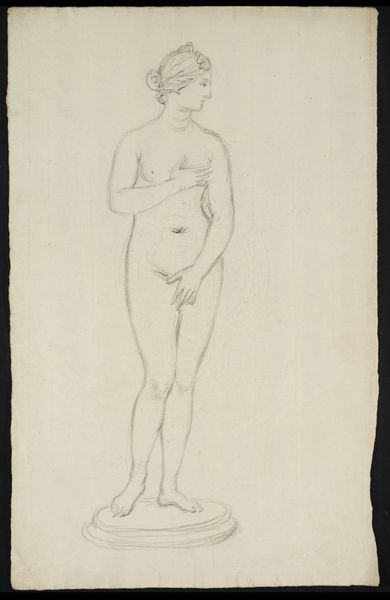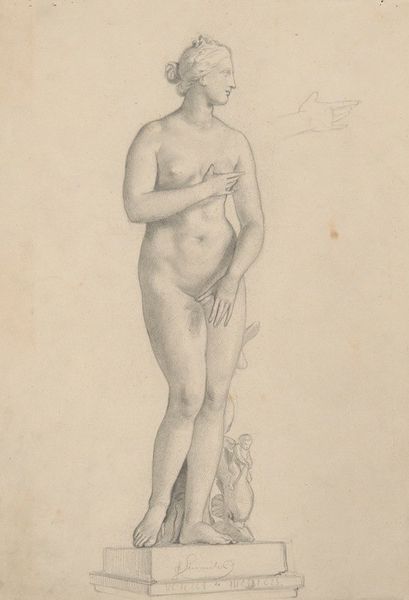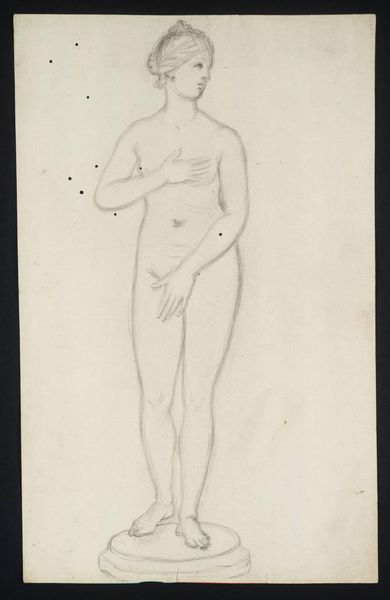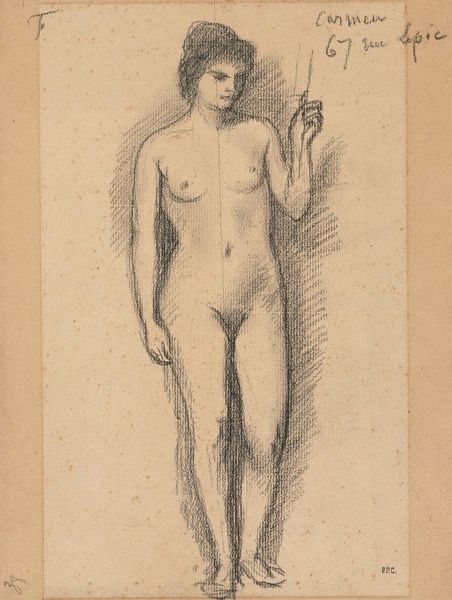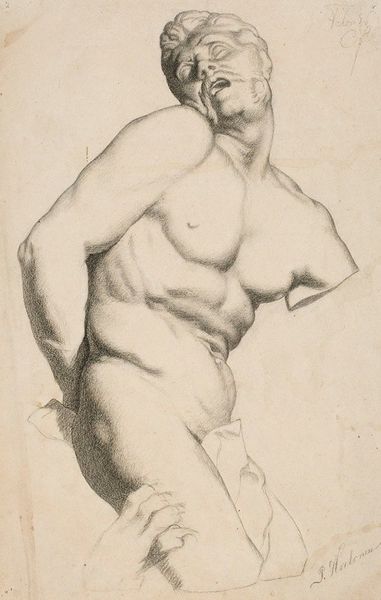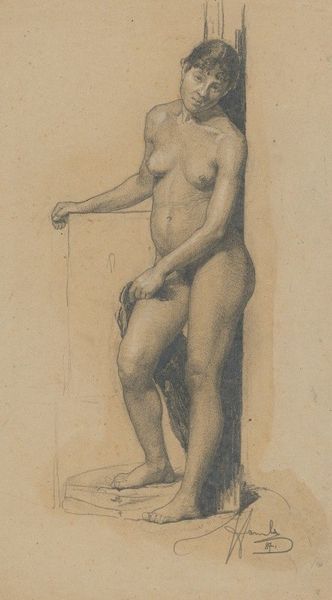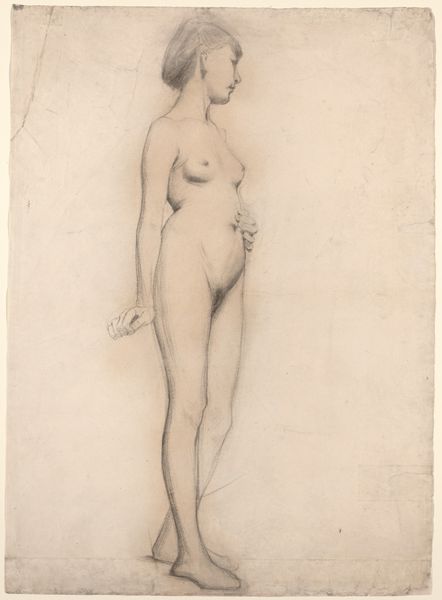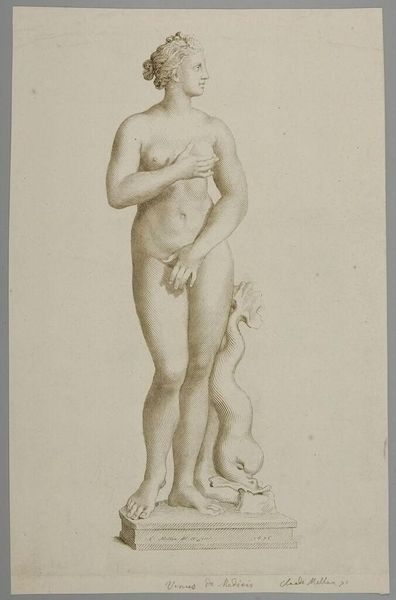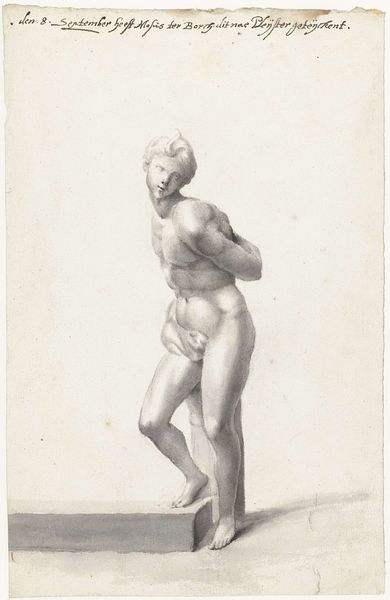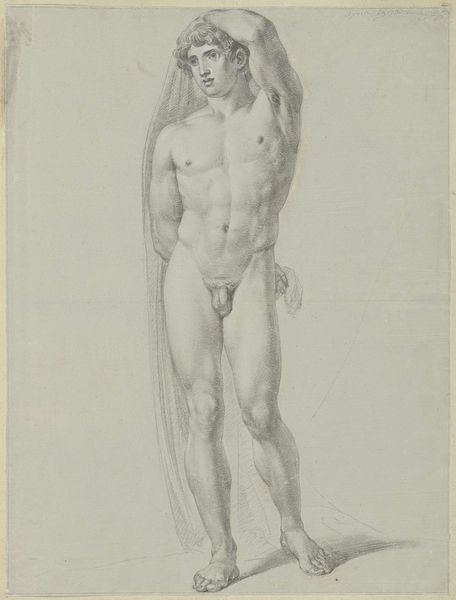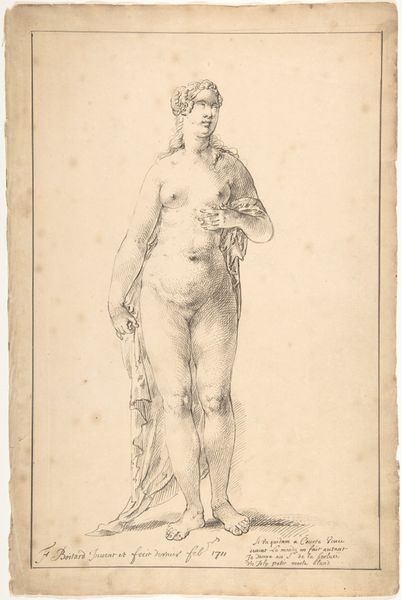![[title not known] by Prince Hoare](/_next/image?url=https%3A%2F%2Fd2w8kbdekdi1gv.cloudfront.net%2FeyJidWNrZXQiOiAiYXJ0ZXJhLWltYWdlcy1idWNrZXQiLCAia2V5IjogImFydHdvcmtzL2ZiYWNjMzA1LTgxMGQtNDdmZi1hYzI3LWQyOGRiNTk4NmE1ZS9mYmFjYzMwNS04MTBkLTQ3ZmYtYWMyNy1kMjhkYjU5ODZhNWVfZnVsbC5qcGciLCAiZWRpdHMiOiB7InJlc2l6ZSI6IHsid2lkdGgiOiAxOTIwLCAiaGVpZ2h0IjogMTkyMCwgImZpdCI6ICJpbnNpZGUifX19&w=2048&q=75)
Dimensions: support: 368 x 233 mm
Copyright: CC-BY-NC-ND 4.0 DEED, Photo: Tate
Curator: This drawing from the Tate Collections is by Prince Hoare, who lived from 1755 to 1834. Its title is not known, and it depicts a standing nude female figure rendered in graphite on a paper support measuring 368 by 233 millimeters. Editor: The pose, with the hands covering the breasts and groin, speaks of a kind of enforced modesty, a societal imposition on the female form. What does it mean to depict nudity yet simultaneously conceal it? Curator: From a materialist perspective, the use of graphite allows for a subtle modulation of light and shadow. This technique softens the figure and also shows the artist’s familiarity with classical ideals. Editor: The absence of a title also feels significant, reducing the figure to an anonymous representation of idealized femininity devoid of individual agency. It reveals how art can perpetuate gendered power dynamics. Curator: But the very act of drawing, of selecting and presenting this image, provides information about the production, patronage, and cultural consumption of art in Hoare's time. Editor: Ultimately, this drawing forces us to confront the history of the male gaze and the ways in which art has been used to objectify and control women's bodies. Curator: It is a fascinating example of how materials and methods can create both aesthetic beauty and reveal historical context. Editor: Yes, a stark reminder of the power and responsibilities inherent in representation.
